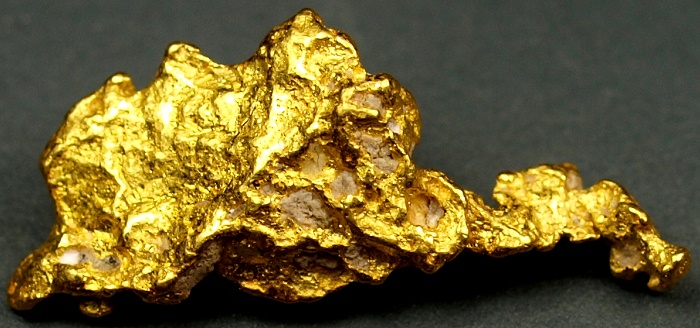
Europe is rich in natural resources, and it’s no surprise that there are several excellent gold panning and mining locations scattered across the continent. Here are nine of the best places in Europe with a rich history of gold mining.
Remember, while these areas have seen historic mining that dates back centuries, mining today may no longer be allowed. In some cases, permission or permits will be required. Always check with local authorities before beginning any mining efforts.
1. Gyöngyösoroszi, Hungary
Gyöngyösoroszi is located in the northeast of Hungary and is renowned for its gold mines.
The region is known for its alluvial gold deposits, which have attracted prospectors for centuries. The gold mines in Gyöngyösoroszi played a significant role in Hungary’s mining industry.
The first gold discoveries in Gyöngyösoroszi date back to the Roman era, and mining activities continued intermittently throughout the centuries. However, it was during the 19th century that gold mining in the area experienced a boom. Large-scale mining operations were established and brought miners from all throughout Europe.
The mines in Gyöngyösoroszi primarily focused on alluvial gold or placer gold. Alluvial gold refers to gold that has been eroded from its original source and deposited in riverbeds, sandbars, or floodplains. Miners would extract gold by panning, sluicing, or using other traditional methods to separate gold particles from sediment.
The gold mining industry in Gyöngyösoroszi declined during the 20th century due to various factors, primarily the depletion of gold reserves within the region. However, the mining heritage of the area is still celebrated today.
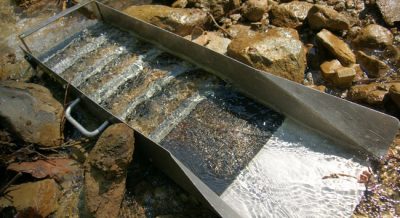
Getting the proper water flow through your sluice box will ensure that you capture the as much gold as possible.
2. Tyndrum, Scotland
Located in the Scottish Highlands, Tyndrum is home to the famous Scottish Gold Mine.
The history of gold mining in Tyndrum can be traced back to the 18th century when gold was first discovered in the area. Small-scale mining operations began, and over the years, a wide array of mining companies have explored and extracted gold from this region. The gold deposits in Tyndrum are generally found within quartz veins of the surrounding country rock.
The Scottish Gold Mine in Tyndrum is a significant site for gold mining in the region. It offers guided tours that provide insights into the gold mining process and the history of gold mining in Tyndrum. Visitors can learn about the geology of the area, the techniques used for gold extraction, and the challenges faced by miners throughout history.
Read: England Gold Locations & Prospecting Areas
3. River Cothi, Wales
The River Cothi, located in the county of Carmarthenshire, Wales, is known for its historical gold mines.
The gold mining activities in the River Cothi can be traced way back to the Roman Empire. The Romans were attracted to the region’s gold deposits and established several mines to extract the precious metal. These mines, collectively known as the Dolaucothi Gold Mines, were among the largest and most productive gold mines in the Roman Empire and provided bullion for coinage and jewelry.
The Dolaucothi Gold Mines continued to be operated intermittently over the centuries, with periods of mining activity followed by periods of abandonment. The mines experienced a revival during the 19th century when new technologies and machinery increased efficiency to the mining operations.
Today, the Dolaucothi Gold Mines are managed by the National Trust and serve as a popular attraction for visitors. The site offers guided tours that provide insights into the mining techniques used by the Romans and the later Victorian-era miners. Visitors can explore the underground workings, walk through ancient tunnels built by early Roman miners.
One of the highlights of a visit to the Dolaucothi Gold Mines is the opportunity to try gold panning in the River Cothi itself. Under the guidance of knowledgeable staff, visitors can learn the art of gold panning and potentially find real gold flakes in the river sediment.
4. Bóbr River, Poland
In southwestern Poland, the Bóbr River is a popular destination for gold prospectors.
erosion and weathering of gold-bearing rocks and then transported and deposited by the river’s currents.
The Bóbr River flows through the picturesque landscape of the Sudetes Mountains, which is known for its mineral-rich geology. The region’s geological history, including the presence of gold-bearing quartz veins and placer deposits, contributes to the gold potential of the Bóbr River.
Gold prospectors typically focus on the river’s sediment and sandbars, where the heavier gold particles settle due to their density. Traditional gold panning techniques, such as using a pan or a sluice box, are employed to separate the gold from the surrounding sediment. Prospecting along the riverbanks or within the riverbed itself can be rewarding, as the Bóbr River continues to carry gold even to this day. With some effort, you can still find gold here.
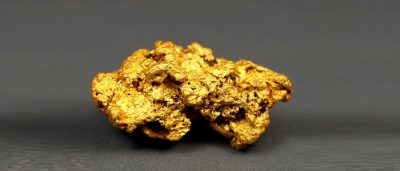
Large gold nuggets are exceptionally rare in Europe. Most prospectors can expect to find specks of gold dust.
5. Asturias, Spain
While Asturias is primarily known for its coal mining history, there is also a notable history of gold mining in the region. Gold mining in Asturias has been practiced since ancient times, and the area has witnessed various periods of gold exploration and extraction.
One of the most significant gold mining sites in Asturias is the Las Médulas UNESCO World Heritage site. Located in the province of León, adjacent to Asturias, Las Médulas was a major Roman gold mining operation. The Romans extensively mined the area during the 1st and 2nd centuries AD, employing innovative techniques such as hydraulic mining that left scars behind on the landscape that is still evident today.
Apart from Las Médulas, other areas of Asturias have also been associated with gold mining. In the region’s rivers and streams, including those flowing through the province of Asturias, there have been small-scale gold mining activities. Gold prospectors have historically engaged in panning and small-scale mining in these waterways, searching for gold particles that have eroded from the surrounding mountains and concentrated in the rivers and streams.
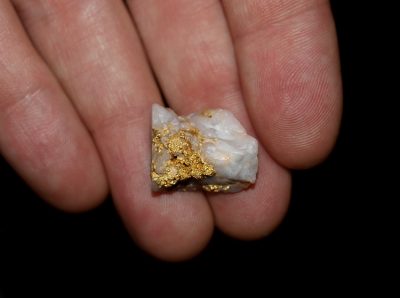
A rich piece of ore showing visible gold.
6. Kildonan, Scotland
Kildonan, situated in the Scottish Highlands, is famous for its gold rush in the 19th century. The area is still known for its gold deposits, and visitors can try their luck panning for gold in the local rivers.
The gold rush in Kildonan occurred in 1868 when gold was discovered in the area by Robert Gilchrist, a local shepherd. The news of the discovery quickly spread, attracting a rush of prospectors from various parts of Scotland and beyond. This event sparked a frenzy, with individuals and families flocking to Kildonan in search of their fortunes.
The miners primarily worked the placer gold deposits, meaning they are found in the river sediments and gravels. Prospectors engaged in traditional gold panning methods, using pans and simple equipment to separate gold flakes and nuggets from the surrounding material. The Kildonan gold rush brought about a sense of excitement and opportunity for those hoping to strike it rich.
While the initial gold rush in Kildonan lasted for a relatively short period, the region continued to attract gold prospectors and mining operations in the following years. Mining companies were established, and larger-scale operations, including the use of machinery and water diversion techniques, were employed to extract gold from the riverbeds.
7. Rosia Montana, Romania
Rosia Montana region in Romania. Rosia Montana, located in the Apuseni Mountains of Transylvania, has a rich mining heritage that spans over 2,000 years.
During the Roman occupation there were significant mining operations that were established, employing advanced techniques such as underground mining and hydraulic engineering.
In more recent history, Rosia Montana experienced another period of intensive gold mining during the 20th century. The area became known for its large-scale mining operations, which were carried out by state-owned mining companies during the communist era.
The mining operations is highly controversial. Locals have concerns about pollution from the mining operation to the local waterways. Many have protested the potential expansion of mining operations.
More about the Rosia Montana Gold Mine
8. River Kupa, Croatia
During the 19th century, gold mining activities along the River Kupa experienced a significant boom. The discovery of larger gold deposits attracted more miners and led to the establishment of mining settlements and infrastructure in the surrounding areas.
The riverbanks and sandbars along the River Kupa have been popular locations for gold panning. Prospectors would set up their pans and sluice boxes to extract gold from the sediments. The gold extracted was typically small in quantity, but it was enough to support small-scale mining operations.
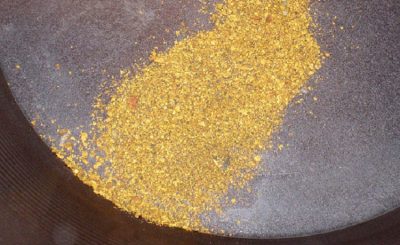
9. County Wicklow, Ireland
Gold mining in County Wicklow gained prominence during the 18th and 19th centuries. The area became known for its gold mines and attracted miners from various parts of Ireland and beyond. One of the most famous gold mining areas in County Wicklow is the Avoca River Valley, often referred to as the “Gold Mines River.”
The Avoca Mines were active from the 18th century until the early 20th century and were a significant source of gold production during that time. The gold deposits were extensive, many found deep within the bedrock of the ground.
The gold mining operations in County Wicklow were conducted through both underground mining and open-pit mining techniques. Miners would extract gold-bearing quartz veins from the rocks and process them to separate the gold. The gold deposits in County Wicklow were primarily lode deposits, which required more extensive mining operations compared to alluvial deposits found in rivers or streams.
Gold Prospecting Locations in Germany
Clickable Map of European Gold Locations










